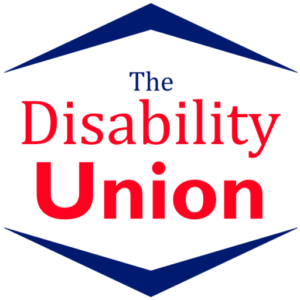
The history of disability isn’t often talked about, but that doesn’t mean that it’s unimportant. Disability, whether we know it or not, has affected events throughout time. In last week’s article, we began talking about disability history in the United States. Today, we’re going to continue our journey through history, starting where we left off.
The Civil War And Disability
The American Civil War saw a large influx of disabled Americans. Both the confederates and union soldiers needed assistance due to being injured in the war. Because of the massive amounts of lost limbs, orthopedic medicine advanced quickly in order to meet the demand. Mississippi, a confederate state, spent 20% of its revenue on prosthetics alone in 1886. In the north that same year, a National Home for disabled Union Soldiers was established.
Hostilities Arise
These institutions had a hard time keeping up with the sudden increase of demand. By the 1850’s, institutions began to lose funding and became places of isolation and abuse. Eugenics and Social Darwinism were gaining popularity by the 1900’s, and caused a newfound prejudice and hostility toward disabled people. These schools of thought brought along the question of whether or not it was favorable to have disabled people in society.
World War I And The Govermant’s Impact On Disability
As the century changed, the government played a significant role in welfare for the first time. World War I reiterated the desire to take care of returning war veterans. Citizens felt an obligation to thank the heroes that fought for their freedoms. This obligation, combined with continual advances in medicine, made it possible for more people to survive becoming disabled. In both 1918 and 1920, congress created rehabilitation programs for vocational training. Along with the sudden spike in disabled veterans returning from war, the Veterans Bureau was later established in 1921. Charitable groups also formed to help employment bureaus, the most famous of which is the American Red Cross.
Disability In Office
1933 was huge for the disability community, even if we weren’t aware at the time. President Franklin D. Roosevelt, who had polio, was elected for his first term. During his presidency, his disability was hidden as much as possible. He was never seen in his wheelchair, and the general public didn’t know the full extent of his disability. Roosevelt was unable to walk, and his agents would carry him to look like he was walking. It was public knowledge that he had contracted polio, but it was thought he had been cured with only a slight limp to show for it. In 1935, Roosevelt signed the Social Security act, giving the first permanent assistance to the disabled.
Innovations In Rehab Services With A Social Focus
Under President Roosevelt, the events of World War II once again caused a surge in disabled veterans, and another expansion of government rehabilitation services. Two programs were created in 1946-47 to assist these veterans: the Paralyzed Veterans of America and the President’s Committee on Employing the Handicapped. The latter was to help businesses hire disabled veterans. However, perhaps the most important innovation during this time period was that of Drs. Howard Rusk and Henry Kessler. They created rehabilitation centers with the idea of one-stop shopping. A disabled person could get resources for all the help they needed in one place. 20 years later, Ed Roberts would continue with this idea and expand it further. This groundbreaking way of tackling disability focused on the social model of disability rather than the medical model.
Other Disability Groups Rise Up
There were a few groups of disabled people who rose up separate from these organizations, setting up their own self-advocacy groups. Deaf and blind people were the first to set up their own organizations at the end of the 19th century. These groups were effective in getting certain legislations passed, but were sometimes seen as unnecessary in times of economic prosperity.
Civil disobedience
Civil disobedience may perhaps have been the biggest boon to the disability movement to come from this time. One such instance was a short lived group called the League for the Physically Handicapped, made up of 300 disabled New Yorkers. These pensioners, mostly made up of polio survivors and people with cerebral palsy, occupied the Works Progress Administration offices to protest job discrimination. In Cleveland, OH, a self-help group for polio survivors started a newsletter that later turned into a journal run and operated by disabled people. This journal shared tips for everything, from taking trips abroad to caring for a baby from a wheelchair.
The Parents’ Movement
Perhaps the biggest change was the rise of the parents’ movement following WWII. As more children were surviving their disabilities due to new research, parents pushed to have their kids in mainstream education. Parents quickly realized they weren’t alone in this struggle, and began forming their own support groups. Groups like the National Cerebral Palsy Association (1948) and the Muscular Dystrophy Association (1950) were founded by parents. These groups took their arguments to congress, and by 1970 had permanent lobbyists there fighting for their childrens’ rights to education.
Disability rights took big leaps in the short time between the Civil War and the 1950’s, but there’s still a long way to go. Next time, we’re going to discuss section 504, and the panic that set in after.


